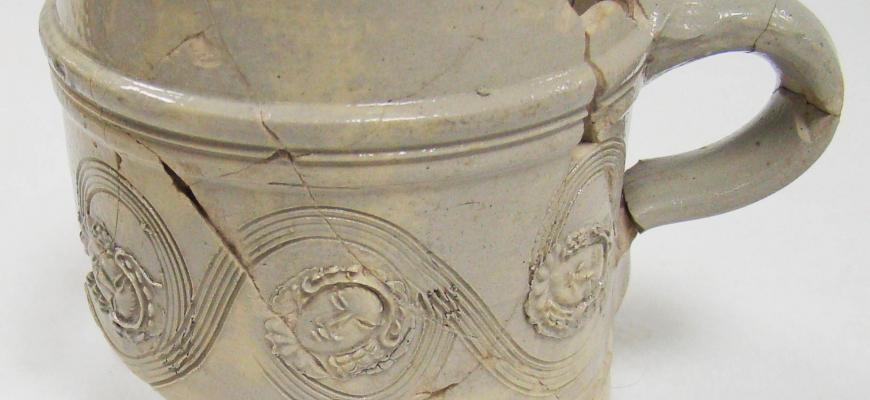Broad Financial Center
Historical Archaeology
Broad Financial Center collection comes from an excavation conducted during the early 1980s on the block bounded by Whitehall, Pearl, Bridge, and Broad streets in lower Manhattan. This site was located on the original 17th century island of Manhattan as opposed to landfill or man-made land. Excavation revealed deposits and features dating from the Dutch settlement of New Amsterdam through the mid-19th century. There are materials associated with the c. 1650 warehouse of tobacco merchant and slave trader Augustine Heermans, including a 1590 Dutch token (the oldest European artifact excavated in New York) and domestic deposits from 17th and early 18th century inhabitants of the block. Significant components from the collection include the privy of the first doctor of the Dutch West India Company named Dr. Hans Kiersted and his wife Sarah, who was Peter Stuyvesant’s Native American interpreter; a c. 1680 basket filled with Native American and European goods including delft tiles, hand-wrought nails, wampum, glass trade beads, thimbles and pins, 17 marbles of various sizes and a possible wooden game board. English Colonial artifacts include 7,000 fragments of 17th and 18th century clay tobacco pipes made at the Robert Tippet shop in Bristol, England, and probably shipped to a local tavern on the block, a sword guard, candle snuffer, candlestick holder, and a delft posset pot. Many other domestic materials date to Federalist and Jacksonian New York. More than 61,000 artifacts are contained in this collection.
- Kiersted privy: 17th century.
- Augustine Heerman’s warehouse: 17th century.



